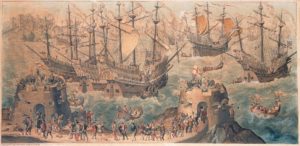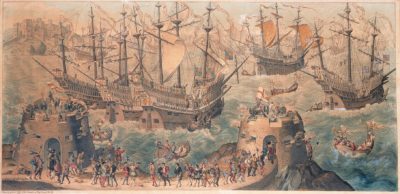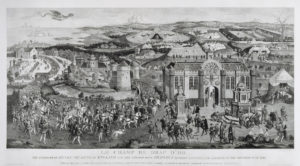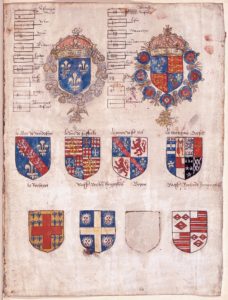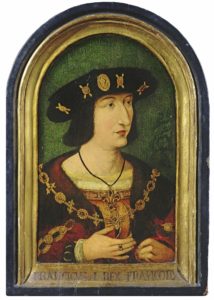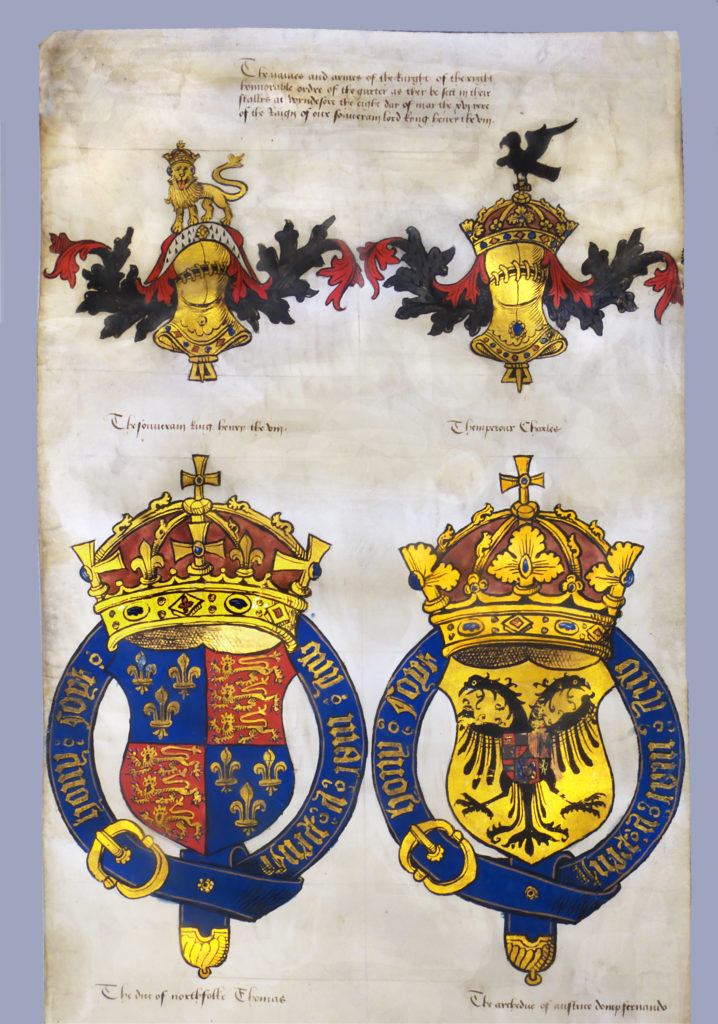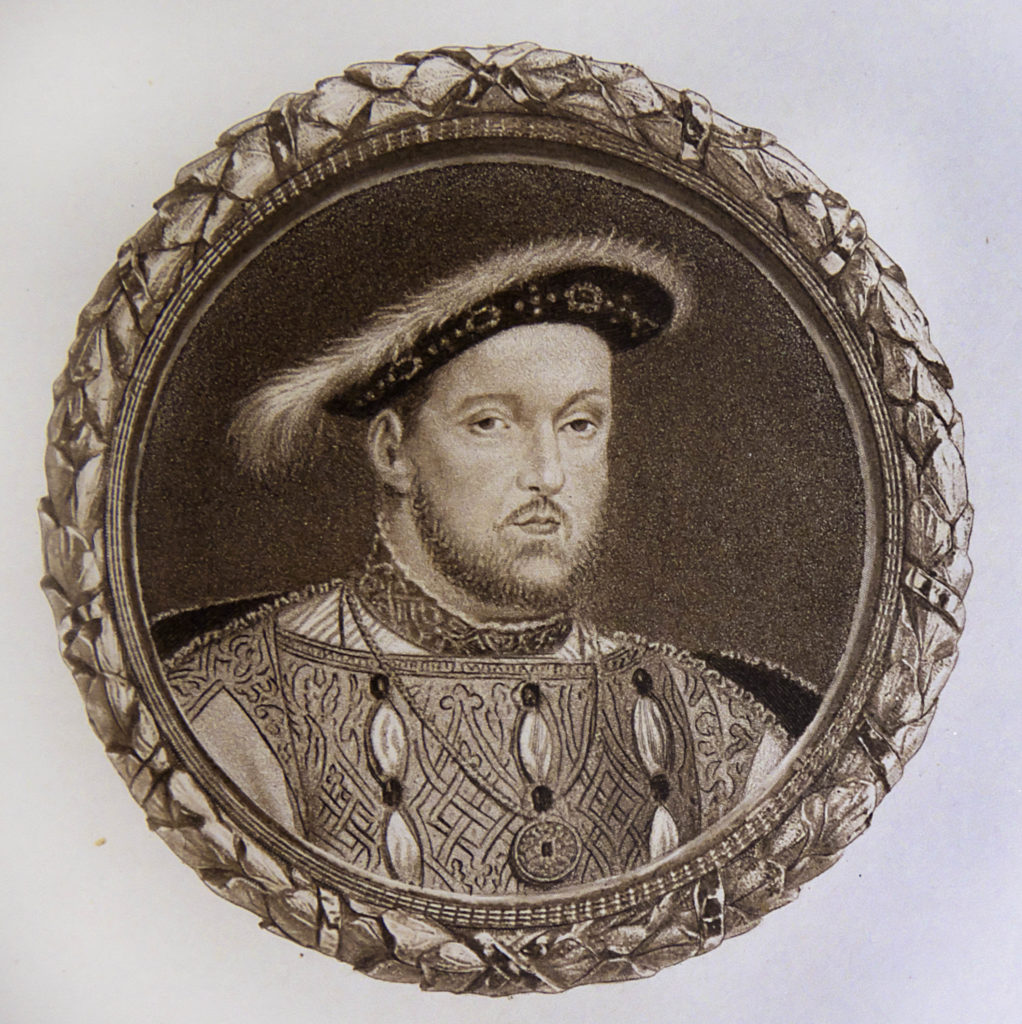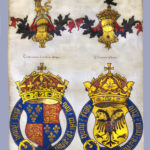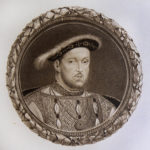For the first few years of Henry VIII’s reign, no-one could have predicted the religious and constitutional upheavals to come. Henry focused his kingship on chivalry and magnificence, just like his fellow monarchs Francis I of France and the Holy Roman Emperor Charles V. Celebrating feats of arms, male friendship and the pursuit of beautiful women, chivalry captivated the young Henry VIII and his friends. Spectacular tournaments and pageants enabled Henry to display his skill on horseback and bravery as a jouster.
In 1520 the courts of England and France came together outside the still English town of Calais, in the extravaganza known as the Field of Cloth of Gold. Intended as a diplomatic summit, the meeting also showcased the intense personal rivalry between Henry and Francis.
Drag or scroll to look more closely at the image
Westminster Tournament Roll
Pictured here is the Society’s reproduction of the Westminster Tournament Roll of 1511 (also known as the Great Tournament Roll of Westminster). Our copy is an early nineteenth century facsimile, drawn onto sheets of paper that were then sewn together to form a roll. The original vellum manuscript, housed in the Heralds Office at the College of Arms is made up of 36 membranes and measures 60 foot in length.
The Roll records the two-day jousting tournament hosted by Henry VIII at the Palace of Westminster held to honour Katherine of Aragon and to celebrate the birth of Henry and Catherine’s first son – Henry Duke of Cornwall. Taking place 12-13 February 1511, the chivalric themed event had four main champions: King Henry, William Courtenay (c.1475-1511), Thomas Knyvett (c.1485-1512), and Edward Neville (d. 1538). The champions jousted under the names Noble Coeur (Noble Heart), Bon Vouloir (Good Will), Vaillant Desyr (Valiant Desire), and Joyeux Penser (Happy Thinking) respectively.
The jousting allowed Henry to display his aptitude for the chivalric arts – masculine sports that enabled participants to showcase gallantry, vigour, and personal and political strength. The chivalric theme extended beyond the arena to the magnificent pageantry that opened the tournament each day, which was ‘of a great quantity, made like a forest with rocks, hills and dales, with diverse sundry trees, flowers, hawthorns, fern and grass all made from green Velvet… and silk of diverse colours’, from the middle of which rose a golden castle, adorned with a garland of roses. This romanticism could also be seen in the decoration that adorned the halls of the Palace of Westminster that acted as the backdrop to the opulent banquet that concluded each day.
The birth of a son further strengthened Henry’s reign and the stability of the Tudor dynasty and Henry wished for all to know of the good news. In orchestrating such a dazzling event, that attracted considerable attention, Henry ensured the news spread across the kingdom.
